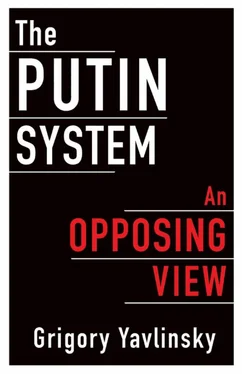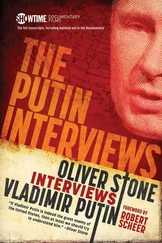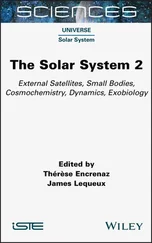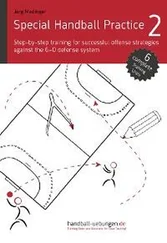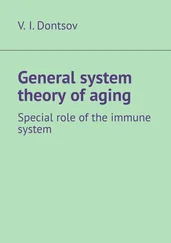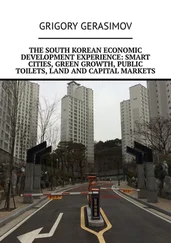Therefore, in the institutional sphere as well, Russia’s authoritarianism displays the characteristics of a peripheral type. Its stagnation-prone qualities and social and economic ineffectiveness in accomplishing the tasks of development are related not to authoritarianism as such but rather to its specific positioning within the system of global capitalism. This positioning makes it possible for Russia to exist as a second-tier, dependent element of this system and, hence, lowers the requirements that it has to meet in global economic development. That is, within this configuration, the weakness of institutions is both a cause and a consequence of Russian capitalism’s peripheral role, and this is at least one reason why all of the authorities’ rhetoric about modernization and about upgrading to the level of world economic leaders remains but empty talk, disjointed pieces of wishful thinking that, quite predictably, are never followed by any practical action.
4
THE FUTURE OF AUTOCRACY IN RUSSIA
What Do We Have to Tolerate (and for How Long)?
In the previous chapters, I have analyzed the political system that has taken shape in Russia and have identified its essential features as a political organization within peripheral capitalism that allows us to characterize it as a peripheral authoritarianism. This means that the political system that has taken shape in Russia is a leader-oriented authoritarianism, with all its typical traits, including monopolistic control of one ruling circle or team, single-handedly led by one person, over all government institutions in the country; the absence of working mechanisms to ensure an involuntary replacement of the ruling circle with another group of people; and the ideology of a unified and indivisible power as the universal principle of governance. It also views the law as an auxiliary tool to use in ruling society, but it does not limit this power or make it accountable.
The economic underpinning of this power has been the ability to allocate administrative rent, derived from monopolistic control over major economic assets. This enables the ruling circle and its leader to command the political life of society as they see fit, by using their control over most of the financial flows and information/propaganda resources—even if, formally, they preserve the channels for feedback from society and the mechanisms of political competition (including a multiparty system and periodic national and local elections).
Thus, the extent of the authorities’ power and the limits of what they can do within the existing framework are primarily determined by the amount of administrative rent they are able to extract and to distribute. The larger the amount, the more opportunities there are for the ruling group to maintain its control over society without applying direct physical pressure. The system’s ability to neutralize potentially destabilizing external impacts also plays an important role. The ruling circle must possess the requisite tools and resources to give them an edge over outside forces that are capable of influencing key segments of society in a direction that is undesirable for the system.
All of this constitutes the common, generic features of authoritarian rule as such. In today’s Russia, these are combined with significant characteristics and elements resulting from the peripheral character of Russia’s capitalism. This is evident in the underdeveloped and undiversified economy; the absence of an economic and political elite embedded in society and its history; the extreme weakness of public institutions, such as political parties, with support in various strata of society; the failure of representative bodies to serve as platforms for interaction among political forces in the pursuit of mutually acceptable solutions; a lack of executive agencies with clearly defined purposes and responsibilities; the failure of the law as the regulator of relations within society; and so on.
Ultimately, this is a manifestation of the dependence of Russian capitalism upon global centers. This dependence accounts, on the one hand, for the lack of autonomy of Russia’s business elites within Russia and their subsequent migration outside of Russia’s territory and, on the other hand, for their anti-Western sentiment, which is generated by their sense of their own parochialism, their subordinate position, and their vulnerability.
All of these features, taken together, help to explain the characteristic traits of Russia’s authoritarianism. There is the authorities’ lack of a sense of their public service mission. There is a reliance upon corruption as a method and instrument of governance, the general public’s lack of faith in the possibility of change (“There is no other way, no matter what we do”), and xenophobia as the basis of political stability. There is a pursuit of isolation from any external influences. Finally, there is a cult of peculiar “traditional values,” used to justify the existence of deep gulfs of socioeconomic inequality and the population’s generally low levels of personal and public consumption relative to the consumption in global centers like the United States and Europe.
At the same time, none of this is exclusive to the global periphery. Moreover, corruption and purposeful conditioning of public opinion by the establishment exist in the global centers in much more intricate forms, and thus on a much larger scale, than on the periphery. The difference is that, in the peripheral-type economies and societies, these are used less for the redistribution of the products of development and more as a universal instrument of governance. Furthermore, reliance upon these instruments largely makes development itself impossible, as it precludes the use of more sophisticated and more efficient tools of governance.
As has been shown, Russia developed this kind of political system gradually, step by step, but quite consistently and steadily, and its shape was to some degree objectively conditioned. The outcome of this was the formation of the full-blown autocracy with markedly peripheral traits and tendency toward stagnation that we see in Russia today. In my opinion, this is best illustrated by the events of 2014, when all of these attributes became fully formed and plain to see. By an arbitrary decision of the president, who was given the legal authority to use military force abroad with no reservation or prior discussion by the parliament’s upper house, Crimea was taken under control and driven toward annexation, and the separatist movement in southeast Ukraine was initiated and supported. To justify these steps, a new edition of the “Eurasian” empire-building ideological campaign was launched, presented as an alternative to European values. The propaganda machine also resorted to lies to deny responsibility for the downing of a Malaysian Airline Boeing 777, which resulted in heavy civilian casualties.
However, it seems not enough to simply record as a given the fact of the formation of such a political system in post-Soviet Russia. If we claim to understand the logic of this system’s development and functioning, then we must to some extent envision the possibilities of its evolution and the scenarios for its future. Despite the infinite possibilities of tomorrow, and knowing that future scenarios always include uncertainty, we still can outline some patterns of development inherent in socioeconomic systems. These patterns are familiar to us from world history and are accounted for by the logic of relationships among social phenomena and events. We shall now investigate how these patterns are playing out in Russia.
THE FUTURE OF THE SYSTEM: IS IT PREDICTABLE?
The first question that I would like to tackle is whether the evolution of a political system may be predetermined in any way at all. Are there any templates that history uses to chart a system’s trajectory?
Читать дальше
